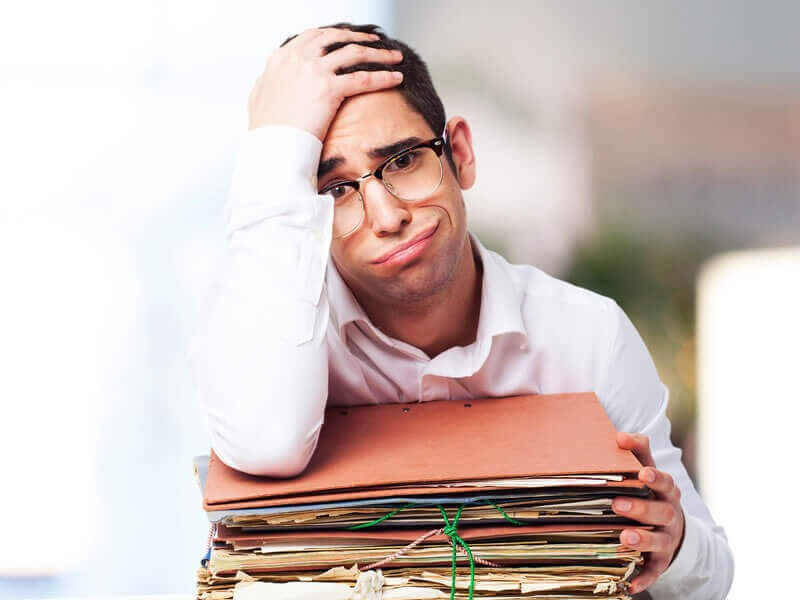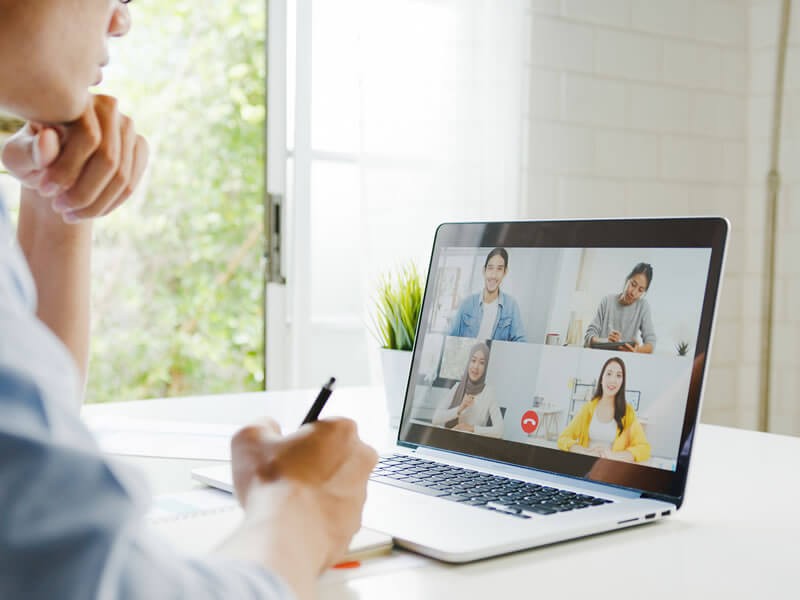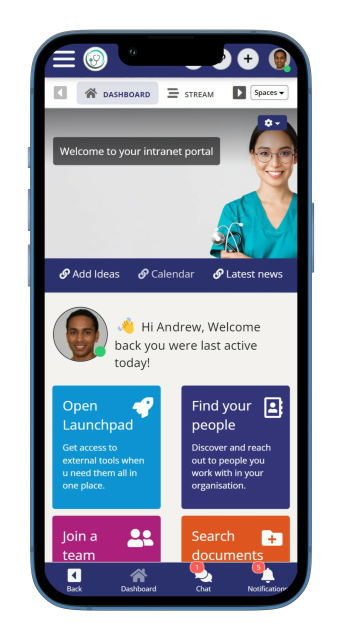Insight Blog
Agility’s perspectives on transforming the employee's experience throughout remote transformation using connected enterprise tools.
18 minutes reading time
(3651 words)
Featured
Intranet vs. Extranet: A 2024 Guide on The Key Differences
Learn more about difference between intranet and extranet apart to make informed decisions for your organizational needs.
Each term represents a distinct network type, and despite their similar names, they entail significantly different security implications and serve diverse business purposes.
Therefore, before disseminating crucial company documents, it is imperative to discern these differences.
Explore the distinctions between intranets and extranets in this comprehensive article. Gain insights into how these internal networks differ and discover their unique applications and benefits.
Learn more about the functionalities that set intranets and extranets apart to make informed decisions for your organizational needs.
What is an Intranet?
Intranets have been around since the early years of the 20th century but were not known until the new millennium turn.
Intranets replaced the older practice of having staff physically enter each department head and his/her cabinets individually to gain access to all the original documents and files that pertain to each department, replacing the more manual practices with mostly electronic means and information.
An Intranet has many advantages over the traditional Internet that makes it extremely popular with companies worldwide.
Unlike the conventional Internet, users on an Intranet can collaborate in various ways, such as discussing internal company procedures or projects, messaging facilities, calendars, schedules, and much more. The Intranet is an international communication system that connects individuals who have similar interests and hobbies, which allows them to share personal knowledge through various websites on the Internet.
An Intranet can provide several tools and programs for organizations. One of the most common tools used on the Intranet is ITIL, which stands for 'Internet Information Integration.' ITIL is an industry-standard and helps employees find information online, which may otherwise be hard to find through various Intranet websites.
Other Intranet programs and tools include discussion boards, discussion groups, chat rooms, fax and email services, calendars, project management programs, training, and support software, newsreaders, telephone services, work order management programs, online bookkeeping, real-time communication, remote support, web conferencing, and more.
The Internet's growth and popularity have created a need for many businesses to develop and maintain their Internet networks, known as extranets. Extranets are independent of the leading Intranet but are accessible through the Intranet.
There are many benefits to using extranets instead of an Intranet, which includes being able to connect to companies that are located around the world, which can increase the ability to reach out and communicate with customers; being able to have multiple people connected at the same time; being able to use a variety of communication tools; being able to implement new software applications without the need to reconfigure everything, and being able to customize and tailor the network to meet the unique needs of each organization.
The current outbreak of COVID-19 pandemic is forcing people to work from their homes on a global scale. The world has never seen the importance of intranet solutions as much as it has in these past few months. Now companies are looking for better and efficient ways to help their employees overcome the communication barriers.
One of the most significant benefits of implementing a CRM into your Intranet is the ability to create customer relationship management systems. Customer relationship management is simply a way of managing the interactions that your customers have with your business.
The CRM strategy used will determine how those interactions are recorded and handled, how those interactions are stored, and how they are used.
This allows your employees to easily track their departments and businesses' progress daily and see which departments are performing the best and which ones are not. When these things are tracked and managed correctly, you can see the direct impact that the implemented CRM strategy has made on your business.
Key features of an intranet
Intranets are robust internal communication platforms designed to enhance collaboration, streamline information sharing, and foster connectivity within an organization.
Key features of an intranet include:
- User Profiles and Authentication: Intranets typically offer user authentication and individual profiles, ensuring secure access to specific information based on user roles and permissions.
- Document Management: An intranet provides a centralized repository for document storage, enabling easy access, version control, and collaborative editing. This feature enhances team efficiency and knowledge sharing.
- Communication Tools: Intranets often include communication tools such as internal messaging, discussion forums, and announcement boards, facilitating real-time interaction among team members.
- News and Announcements: A dedicated section for news and announcements keeps employees informed about organizational updates, events, and important news, fostering a sense of unity and awareness.
- Task Management: Many intranets integrate task management tools, allowing teams to create, assign, and track tasks collaboratively. This feature enhances project management and team productivity.
- Employee Directories: An employee directory provides a comprehensive listing of team members, their roles, and contact information. This promotes transparency and helps employees connect with the right colleagues.
- Mobile Accessibility: Modern intranets prioritize mobile accessibility, enabling employees to access information, communicate, and collaborate from various devices, including smartphones and tablets.
- Search Functionality: Robust search capabilities ensure that users can quickly locate relevant information within the intranet, enhancing efficiency and reducing time spent searching for documents or resources.
- Integration with Business Tools: Intranets often integrate with other business tools and applications, such as calendars, email systems, and project management software, creating a unified digital workplace.
- Customization and Branding: Organizations can customize the appearance and structure of their intranet to align with corporate branding, creating a cohesive and branded digital environment.
- Analytics and Reporting: Intranets may include analytics tools that provide insights into user engagement, popular content, and overall intranet usage. This data can inform decision-making and content strategy.
- Security Measures: Intranets prioritize security with features like data encryption, user authentication, and access controls to protect sensitive internal information.
These features collectively contribute to making intranets versatile tools for improving internal communication, collaboration, and knowledge sharing within organizations.
Why companies use intranet?
Companies leverage intranets for various purposes, and the following highlights some key advantages:
Improved Communication and Collaboration:
- Centralized Information Hub: Intranets serve as a unified platform, granting employees access to company news, policies, documents, and crucial information. This eliminates the need to sift through emails or various storage locations, saving time and enhancing efficiency.
- Streamlined Communication: Offering diverse channels like forums, chat, and social features, intranets facilitate seamless connectivity and collaboration across departments and locations. This promotes transparency, knowledge sharing, and informed decision-making.
- Project Management Tools: Integrating project management tools, many intranets empower teams to monitor progress, share files, and communicate efficiently within projects.
Increased Productivity and Efficiency:
- Reduced Information Silos: Centralization of information on intranets eliminates duplication efforts and the time wasted searching for data, resulting in heightened productivity.
- Automated Workflows: Certain intranets provide automation tools, enabling employees to automate repetitive tasks, thereby saving valuable time and resources.
- Improved Knowledge Management: Intranets serve as repositories for institutional knowledge, ensuring easy accessibility for all employees. This reduces the need for repetitive training and ensures everyone stays informed.
Enhanced Employee Engagement and Culture:
- Company News and Announcements: Intranets provide a direct platform for leadership to share company news and announcements, fostering transparency and connection.
- Employee Recognition Programs: Intranets facilitate employee recognition, acknowledging and rewarding achievements to boost morale and engagement.
- Social Features: Many intranets incorporate social elements such as employee profiles, discussion forums, and polls, promoting connections among colleagues.
Additional Benefits:
- Remote Work Support: Intranets play a pivotal role in facilitating communication and collaboration among remote employees.
- Security and Access Control: Intranets ensure a secure environment for sharing sensitive information while controlling access to specific resources.
- Scalability and Customization: Modern intranets are highly scalable and customizable, allowing companies to tailor them to their specific needs and seamlessly grow with evolving requirements.
Intranets prove invaluable in enhancing communication, collaboration, productivity, and employee engagement for organizations of all sizes, particularly those with remote workforces or complex information needs.
What is an extranet?
What is an Extranet?
Well its is a controlled internal network that enables access from a specific set of users, vendors, and partners or to a particular subset of that information available from an organization's internal network.
The original Extranet was created by AT&T, now owned by Verizon, as a public system offering connectivity to thousands of universities and research facilities across the country.
Although the intention was primarily for educational and research purposes, extranets' use has rapidly expanded to many business processes, both commercial and non-commercial. Web hosting companies, email services providers, telecommunication companies, and even the government have used them for particular work types.
Also, many commercial Vendors offer Extranet technologies and services for your business.
These businesses include Internet Service Providers, Information technology companies, data analysis, visualization vendors, software development companies, business process outsourcing firms, and others who offer to manage, maintain, operate, and provision virtual space on a private network of servers.
While the early entrants were controlled internally, more external third-party vendors have supplied their infrastructures for use within commercial organizations. The most popular external vendor of Extranet technology is Microsoft with its Office suite of products.
However, as more commercial businesses decide to move their communications infrastructure to the cloud, external technologies' availability to manage and administer company seal network becomes increasingly essential.
In a broader sense, "extranet" can mean any computer network, although these days, most people simply think of Internet users when they hear the term. An extranet is an automated controlled internal network that allows limited access to external users, vendors, service providers, or a local group of authorized users, only usually to a smaller subset of the data accessible from its internal network.
Some computer networks allow Internet access anywhere globally, while other networks are controlled internally by an individual computer system or server.
Extranets provided access to Internet resources that are unavailable outside of that specific computer network. By allowing users access through a secure internal network, extranets allow for faster, more efficient application execution, better security, and improved resource utilization.
The significant advantage of this is not visible to the user; however: it's all done within the firewall of the organization firewall.
This means that even if an unauthorized user compromises the Internet connection, the existence of an extranet software program will not prevent the application from running, as it is running inside a completely secure environment.
A trendy extranet software is OSI (Internet Information Service) software, which provides information services such as remote access, Internet telephony, and file sharing functionality over a proprietary IP network. OSI was designed by Bell Atlantic to be used on the Bell Atlantic's small area network (SAN), and it is used with the Bacterial Operating System (BSN) and a proprietary Intranet to form the "Open Network."
This was chosen because of its ease of use (instead of the more traditional ISP connection, which required excellent IT knowledge for administrators and subscribers). As an alternative to OSI, another web technology is known as Bell Atlantic also developed Jargonware to provide similar information services on a similar network.
However, Jargonware was later integrated with the SIP (Search Language Interface) protocol to create an even more handy tool for Bell Atlantic's internal network.
Key features of an extranet
An extranet typically encompasses a range of features designed to facilitate secure collaboration and communication between organizations and their external partners.
Key features of an extranet include:
- User Authentication and Access Control: Extranets implement robust user authentication processes to ensure that only authorized individuals can access specific information. Access control mechanisms help define and manage user permissions.
- Secure Data Sharing: The primary function of an extranet is to securely share data with external partners. It enables the exchange of information, documents, and files in a protected and controlled environment.
- Collaboration Tools: Extranets often integrate collaboration tools such as document sharing, version control, and collaborative editing. These tools facilitate seamless teamwork and communication between internal and external stakeholders.
- Messaging and Communication Channels: To enhance communication, extranets may include messaging features or communication channels. This allows users to interact in real-time, reducing reliance on external email systems.
- Mobile Accessibility: Many modern extranets are designed with mobile accessibility in mind, allowing users to access information and collaborate from various devices, including smartphones and tablets.
- Audit Trails and Logging: Extranets often include audit trails and logging features to track user activities. This is crucial for monitoring data access, ensuring compliance, and investigating security incidents.
- Integration Capabilities: Seamless integration with other business tools and systems, such as Customer Relationship Management (CRM) or Enterprise Resource Planning (ERP) systems, enhances the overall functionality of the extranet.
- Customization and Branding: Organizations can often customize the look and feel of their extranet to align with their branding. This fosters a cohesive user experience and reinforces brand identity.
- Security Measures: Security is a paramount consideration in extranet design. Features like encryption, firewalls, and regular security audits help protect sensitive data from unauthorized access.
- Data Compliance Features: Given the importance of data compliance, extranets may incorporate features to assist organizations in adhering to regulations such as GDPR. This includes tools for data anonymization, consent management, and reporting capabilities.
These features collectively contribute to making extranets effective tools for secure collaboration and information sharing between organizations and their external partners.
Why companies use extranet?
Organizations leverage extranets to grant secure information access to customers or vendors, fostering collaboration and communication.
For instance, if you have a recurring customer placing regular orders, implementing a secure extranet allows them to seamlessly update orders, process invoices, and communicate with your team.
The utilization of an extranet is integral to a robust data management strategy, offering businesses a means to share information with trusted partners and customers while upholding security standards.
Beyond facilitating secure collaboration, extranets also play a crucial role in helping organizations adhere to data-sharing regulations, such as GDPR.
For those seeking a reliable method to share sensitive data with customers or vendors, exploring digital tools that facilitate secure extranet access is paramount. With an appropriately configured setup, organizations can effortlessly share information with customers and ensure compliance with data regulations.
Specific scenarios where a frontline organization may benefit from an extranet platform include:
- Sharing financial data with auditors and key stakeholders.
- Providing customer support through a help desk.
- Collaborating on product development with engineering teams.
In each of these instances, an extranet solution proves instrumental in maintaining productivity and alignment with partners.
Difference between intranet and extranet
One of the biggest questions I get asked is, "What is the difference between intranet and extranet?" There is a big difference between the two, and it's essential to know this if you're going to use either. First off, let's talk about what an Extranet is.
An Extranet is a separate network from the Internet itself and is often housed in some building on a college campus.
They are sometimes used to provide access to information that is not available otherwise, as with the Internet itself.
For example, the United States Military's research has found that it is tough to gain information on individual websites because of security features that prevent people from accessing certain information. Therefore the military stores its data on its network. It also may have other purposes, such as storing data on citizens if they had been deemed a danger. Many times this information is available to the public.
Many colleges have intranet sites and intranets, which allow students to gain information on classes that are being attended and post assignments, and do other things regularly on the internet. However, these sites can differ from the standard internet websites that most people are familiar with. An intranet or extranet is much more sophisticated than your typical website.
An intranet comprises a network of computers instead of a single computer. The physical location of the network is different, as is the information it can contain. For example, the information is not collected within one specific area. It can be located worldwide, but each site will only hold a certain amount of data. This information can include email addresses, photos, and other various forms of data. It can be used for any purpose that the person might have to make learning more efficient and fun.
Extranets are networks that are separate from one another.
This means that the information can be accessed from one site and another, but it cannot be transferred from one site to another. Students who want to have their classwork saved and access it from another location can use extranets. This can be incredibly convenient for those taking online degrees, as sometimes you may need access to an internet cafe to complete your degree.
Both types of sites, however, have one significant difference.
Extranets are older networks that have not been entirely replaced by modern technology, while Intranets have been very stylish. For instance, many of the public school systems in the US use Extranets to save resources. This is because they do not take up much space and allow people to use more computers than in a public school setting.
An intranet can allow a person to access a wide variety of information stored on a central server. This information is typically more easily accessed and is also much more frequently used. The data can include news, articles, and other relevant information. Since this information can be downloaded, the user does not have to be online at that exact moment to view it.
If you are interested in a job that requires a great deal of computer use, or if you simply like to use the internet at home for entertainment, up for an Intranet. While you will still be required to use the internet at home, you will do so at a much more convenient time and in a location that is more conducive to your work.
You may also find that it is much easier to work with this type of system, as it will allow you to collaborate with others who are located across the country or even around the world.
Where does the intranet fit in the digital workplace?
The intranet is not the digital workplace.
The goal of a digital workplace is to break down communication barriers and foster efficiency, innovation, and growth. The digital workplace is not a one-size-fits-all solution but rather a best-in-class set of platforms and tools that make work happen seamlessly.
A successful digital workplace uses intelligent workflows and an effective internal communications platform to make everything work on-demand and with less friction. It serves a broad range of purposes and uses, but at its core, an intranet is there to help employees
Which solution is most suitable for my organization?
In navigating the choice between intranets and extranets, organizations seek connectivity and productivity.
The challenge lies in determining which solution aligns best with specific needs.
For organizations requiring a platform to securely manage information exchange with customers or vendors, an extranet stands out as a prime choice. Conversely, if the aim is to connect remote workers or teams operating from desktops, an intranet may offer a more fitting solution.
To make an informed decision, it is crucial to assess the needs of both employees and customers. For instance, if collaboration spans multiple partners or vendors across diverse locations, opting for an extranet platform becomes particularly advantageous.
Considering broader organizational goals is equally vital. Are the objectives centered around enhancing employee engagement and retention through improved communication and collaboration processes? In such cases, an intranet or employee engagement tool might be the preferred option. Conversely, if the focus is on outward or customer-facing digital platforms, an extranet platform could be the ideal fit.
In conclusion, adopting a holistic perspective on organizational needs and goals is imperative in selecting the right platform. Engaging in discussions with your team, conducting thorough research, and finding a solution that impeccably caters to your unique requirements should be the ultimate goal.
Have you explored the potential of a mobile application?
Mobile apps can bring numerous benefits, especially for frontline workers.
These advantages include real-time communication and collaboration capabilities, the convenience of accessing business information and data on the move, and the flexibility to stay connected regardless of location.
If you're seeking ways to enhance employee productivity or elevate customer service levels, considering the integration of a mobile app into your organization might be a valuable step.
Engage in discussions with your team to pinpoint your specific requirements and conduct research on the diverse mobile app solutions available in today's market.
By selecting the right platform, you can significantly contribute to advancing your company to the next level! Additionally, feel free to download our complimentary guide for further insights.
How can AgilityPortal help?
Introducing the best extranet solutions AgilityPortal Frontline Engagement App, an unparalleled solution for enhancing your employee network experience.
This cutting-edge, cloud-based software platform offers a secure and efficient way to manage all your internal collaboration requirements.
It encompasses real-time communication and collaboration features, ensures on-the-go access to vital business information and data, and facilitates seamless connectivity regardless of your location.
Crafted by industry experts, AgilityPortal stands out as an intuitive and robust platform poised to elevate employee productivity, retention rates, and overall customer satisfaction levels.With advanced features such as mobile capabilities secure extranet platform, versatile bulk messaging options, and instantaneous feedback tools, it emerges as the definitive solution tailored for the demands of the modern workforce.
Ready to transform the way your team collaborates?
Give AgilityPortal a try and experience the power of a modern intranet solution. Learn more about how AgilityPortal can bolster your digital workforce by exploring its features today.
Elevate your internal communication and collaboration to new heights with AgilityPortal!
Categories
Blog
(2592)
Business Management
(318)
Employee Engagement
(205)
Digital Transformation
(172)
Intranets
(119)
Growth
(118)
Remote Work
(61)
Sales
(48)
Collaboration
(37)
Culture
(29)
Project management
(29)
Customer Experience
(26)
Knowledge Management
(21)
Leadership
(20)
Comparisons
(5)
Ready to learn more? 👍
One platform to optimize, manage and track all of your teams. Your new digital workplace is a click away. 🚀
Free for 14 days, no credit card required.

















